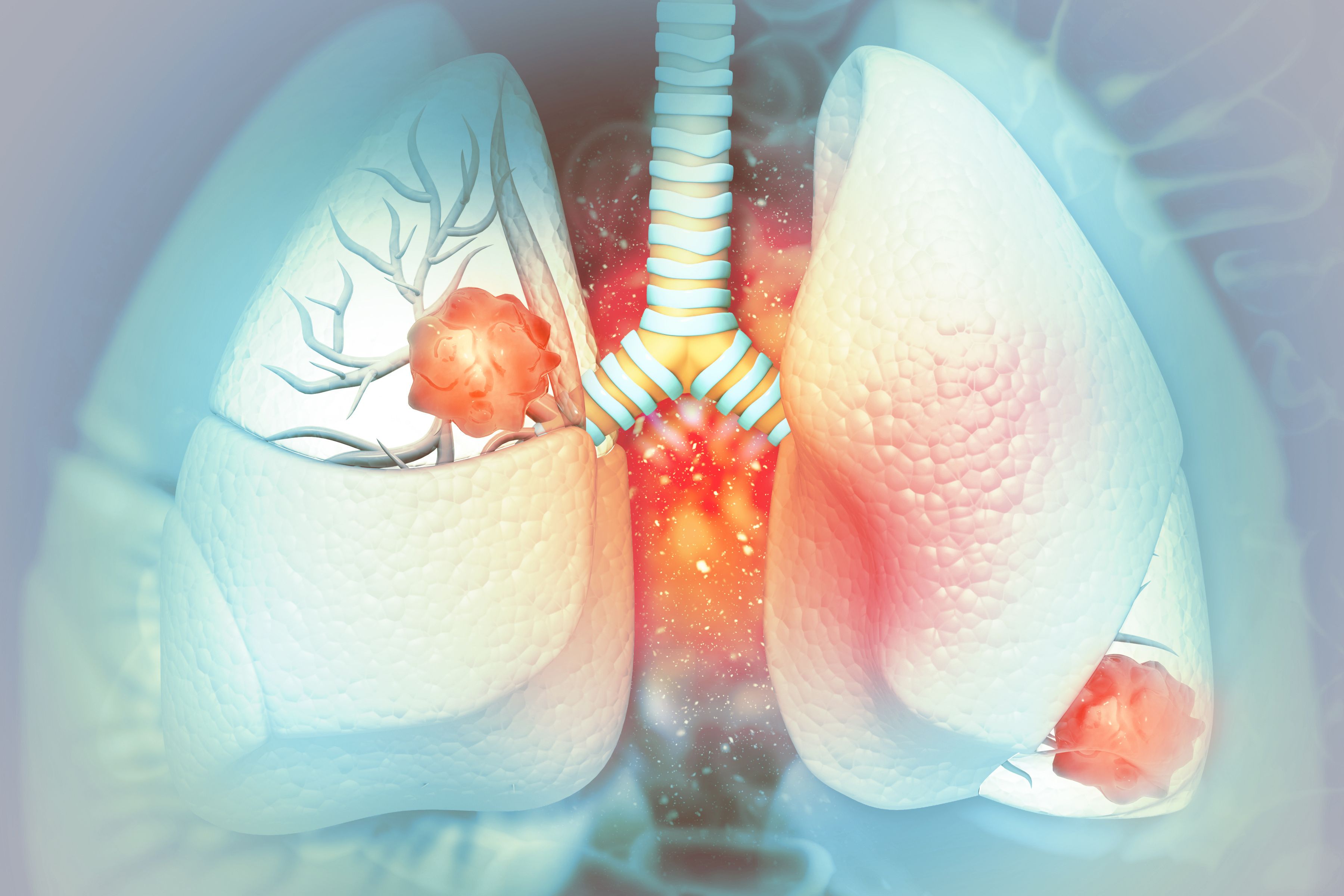Savolitinib/Osimertinib Yields Durable Responses in EGFR-Mutated, MET+ NSCLC
The phase 2 SAVANNAH trial of savolitinib plus osimertinib has demonstrated the combination’s efficacy and safety in EGFR-mutated NSCLC.
Lung cancer: © Crystal Light - stock.adobe.com

Combination therapy with the MET tyrosine kinase inhibitor savolitinib plus osimertinib (Tagrisso) led to high and durable response rates and was well tolerated for the treatment of patients with EGFR-mutated advanced non–small cell lung cancer (NSCLC) and MET-overexpression or -amplification following progressive disease, according to data from the phase 2 SAVANNAH trial (NCT03778229) presented at the 2025 European Lung Cancer Congress.1
Among patients treated with the combination (n = 80), a confirmed overall response rate (ORR) of 56% (95% CI, 45%-67%) per investigator assessment was seen.2 This was made up of a complete response (CR) rate of 1% and a partial response (PR) rate of 55%. The median time to response was 6.1 weeks (interquartile range [IQR], 6.0-6.7), and the median duration of response (DOR) was 7.1 months (95% CI, 5.6-9.6).
The confirmed ORR was 55% (95% CI, 43%-66%) per blinded independent central review (BICR), with CR and PR rates of 1% and 54%, respectively. Additionally, the median time to response was 6.0 weeks (IQR, 5.7-6.6), the median DOR was 9.9 months (95% CI, 6.0-13.7), the investigator-assessed median progression-free survival (PFS) was 7.4 months (95% CI, 5.5-7.6), and the BICR-assessed median PFS was 7.5 months (95% CI, 6.4-11.3).
About the SAVANNAH Study of Savolitinib
The phase 2, ongoing, randomized SAVANNAH study evaluated the combination of savolitinib and osimertinib in patients at least 18 years of age (≥20 years in Japan) with locally advanced or metastatic NSCLC with EGFR mutations and centrally confirmed MET overexpression per immunohistochemistry (IHC) or amplification per fluorescence in situ hybridization (FISH).1,2 Patients were required to have had disease progression on prior osimertinib and an ECOG performance status of 0 or 1.2
Based on the original single-arm design of the study, patients were treated with savolitinib at a dose of 300 mg or 600 mg once per day or 300 mg twice per day, in combination with oral osimertinib 80 mg daily.1 In 2022, a comparison of savolitinib 300 mg twice daily and osimertinib 80 mg per day to savolitinib 300 mg twice daily and placebo was added to the trial to evaluate the contribution of components.
Over 360 patients were enrolled in the study in more than 80 centers globally, including in North America, Europe, South America, and Asia.1
The primary end point of the study was investigator-assessed ORR. Secondary end points consisted of BICR-assessed ORR, PFS, DOR by investigator assessment and BICR, overall survival, and safety.
The median age of patients in the efficacy-evaluable population was 66 years (range, 29-83).2 A total of 70% of patients were female, 71% were White, 60% had an ECOG performance status of 1, and the remaining 40% had an ECOG performance status of 0. Former smokers made up 48% of the patient population, 39% had brain metastases at baseline, and all received 1 previous line of therapy.
Safety Findings
Any-grade, any-cause adverse events (AEs) were seen in 99% of patients. A total of 57% of patients in the trial had grade 3 or higher AEs. For 5% of patients, AEs led to death. Further, serious AEs were seen in 31% of patients.2
In 16% of patients, AEs led to discontinuation of savolitinib. Dose reductions and dose interruptions of savolitinib were seen in 21% and 48% of patients, respectively. For osimertinib, AEs led to discontinuation, dose reductions, and dose interruptions in 12%, 3%, and 41% of patients, respectively.
The most common AEs observed in 15% of patients or more included peripheral edema (grade 1/2, 48%; grade 3, 11%), nausea (43%; 2%), diarrhea (30%; 3%), vomiting (20%; 1%), dyspnea (16%; 3%), asthenia (17%; 3%), pyrexia (18%; 0%), fatigue (17%; 0%), back pain (13%; 2%), constipation (15%; 0%), cough (15%; 0%), and hypoalbuminemia (15%; 0%). Notably, grade 4 dyspnea was reported in 1% of patients.
Beyond the ongoing placebo comparison in the SAVANNAH trial, the savolitinib/osimertinib combination is also being investigated in the ongoing phase 3 SAFFRON study (NCT05261399).
References
HUTCHMED highlights savolitinib SAVANNAH phase II and other data at European Lung Cancer Congress 2025. News release. HUTCHMED Limited. March 20, 2025. Accessed April 8, 2025. https://www.hutch-med.com/elcc25/
Ahn M, Kim TM, Bonanno L, et al. SAVANNAH: savolitinib (savo) + osimertinib (osi) in patients (pts) with EGFRm advanced NSCLC and MET overexpression (OverExp) and/or amplification (Amp) following progressive disease (PD) on osi. J Thorac Oncol. 2025;20(suppl 3):S4-S5. doi:10.1016/S1556-0864(25)00197-2








